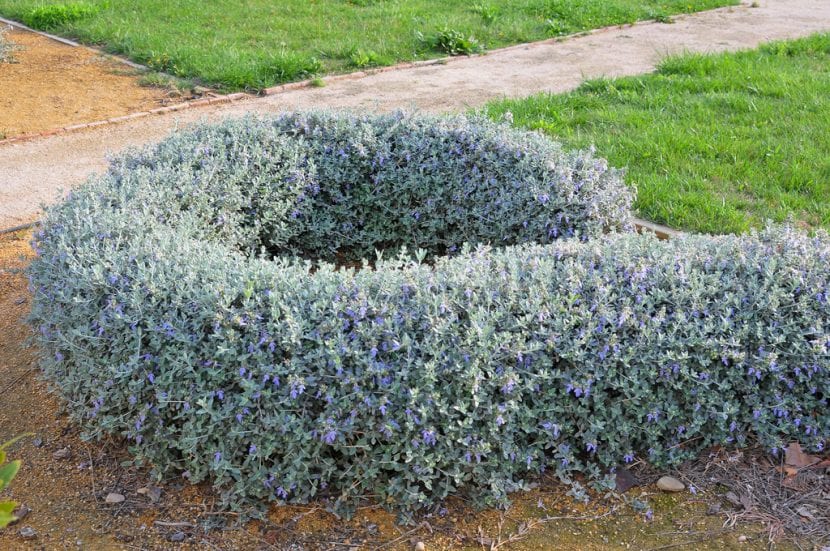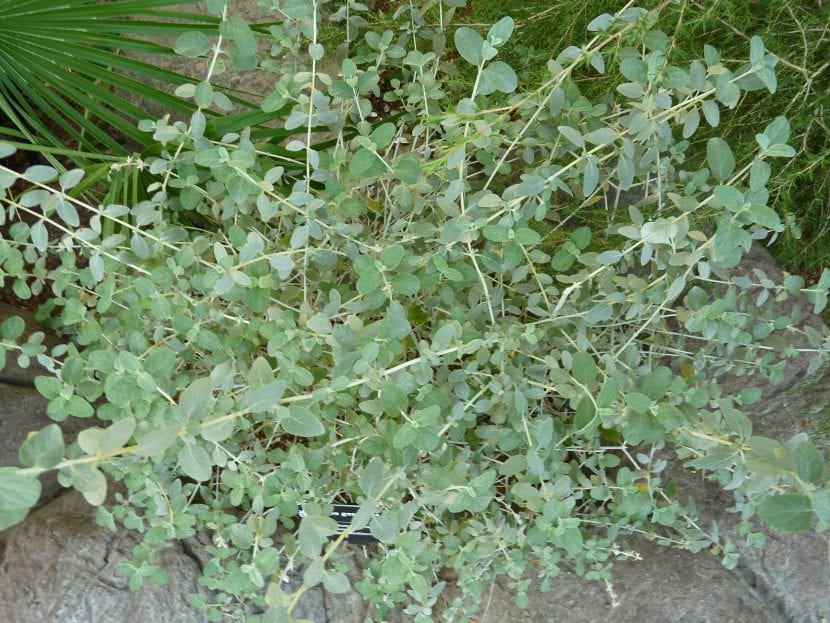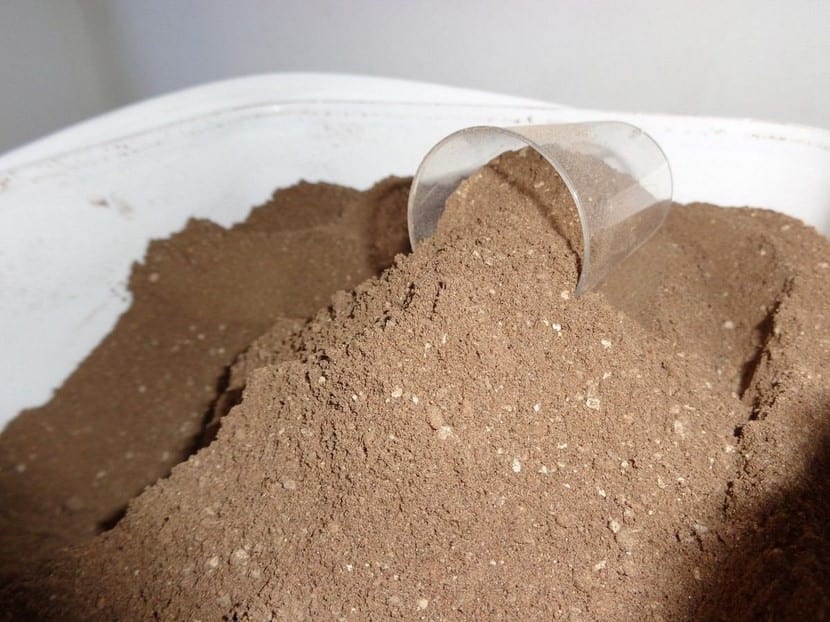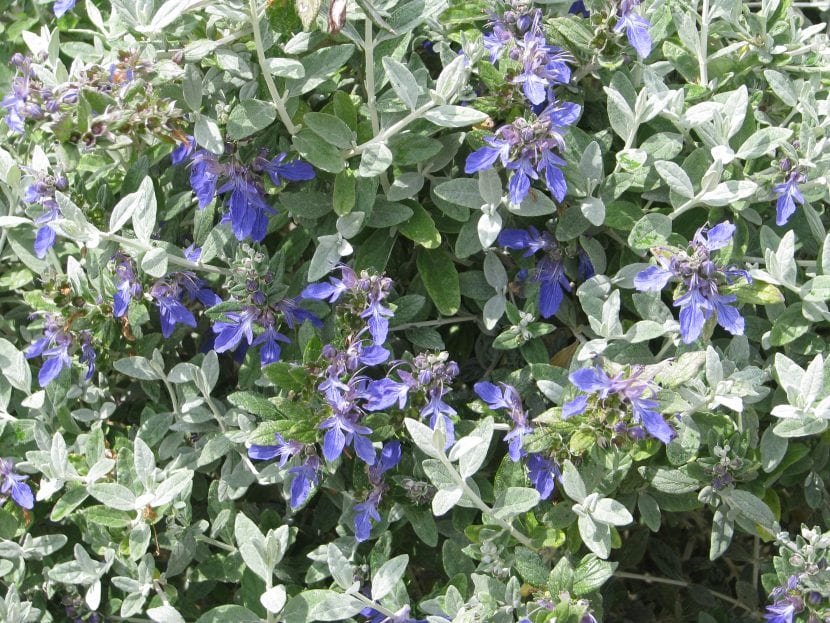
Image - Flickr / José María Escolano
Few shrubs are as hardy and adaptable as the Teucrium fruticans. In rather hot and dry climates it is a most interesting species, since it adds color to a garden where green tends to predominate.
In addition, it can be pruned to shape, which makes it highly recommended to purchase one or more specimens. I'm sure you won't regret it. AND do not worry about their care: next I will tell you about them ... and much more 🙂.
Origin and characteristics

Image - Wikimedia / James Steakley
It is an evergreen shrub whose scientific name is Teucrium fruticans, but which is popularly known as teucrio, olivilla, bitter sage, olivera, rabies sage or royal trojan. It grows to a maximum height of 2 meters, although it is normal to leave it between 50 and 150cm. Its stems are erect, highly branched, and glabrous.
The leaves measure between 15 and 55mm by 8-35mm, and are ovate, flat, leathery, whole, with an olive green upper surface and a whitish underside. The flowers are grouped in clusters, and are hermaphroditic or female, pinkish-white, lilac or bluish in color. The fruit is dry, obovoid and brown in color. Blooms in spring and sometimes also in summer.
What are their cares?
If you finally dare to purchase a copy, we recommend taking care of it as follows:
Location
Must be outside, in full sun. It could be in semi-shade, but only if it is in a place where it receives more light than shade.
Earth
- Flower pot: it is a plant that conforms to little. Mixing mulch (for sale here) with 30% perlite (they sell it here) you will get it to be perfect.
- Garden: prefers fertile, deep and sandy soils. From experience I will tell you that it also works well in those that are clayey, even if they are somewhat poor in nutrients.
Irrigation
It is very resistant to drought; in fact, this is one of the qualities that is making it so popular in areas with a Mediterranean climate or similar, since in these places the annual rainfall is usually rather scarce. Where I live, for example, only about 350mm fall a year and the teucrium is hardly watered once it has been established (from the second year after planting in the field).
However, it is afraid of waterlogging. For this it is advisable to check the humidity of the soil before proceeding to add water; This will reduce the risk of root rot. How? Very simple: you just have to use a digital humidity meter, or insert a thin wooden stick (if when you extract it it comes out with a lot of adhering soil, do not water).
Subscriber

Guano powder.
In spring and summer, once a month you can pay it with ecological fertilizers, such as guano or herbivorous animal manure. In the case of having it in a pot, use liquid fertilizers following the instructions specified on the container.
Multiplication
El Teucrium fruticans multiplies by seeds in spring and cuttings in late summer. Let's see how to proceed in each case:
Seeds
- First, a seedling tray is filled (like this one you can get here) with universal growing medium (for sale here).
- Then, it is watered consciously.
- Afterwards, a maximum of two seeds are placed in each alveolus, and they are covered with a thin layer of substrate.
- Then water is sprayed on the surface.
- Finally, the seedling tray is placed outside, in full sun.
They will germinate in about 2 weeks.
Cuttings
To multiply it by cuttings you simply have to cut a piece of about 40cm long without flowers, impregnate the base with homemade rooters and then plant it in a pot with vermiculite (get it here).
In this way, it will emit its own roots after about a month, keeping the pot protected from direct sun.
Pruning
It is pruned throughout the year, removing dry, diseased, weak or broken branches, and trimming those that are growing too much. It is usually given a rounded shape, but if you want to try other things, let your imagination run wild 😉.
Plagues and diseases
No problems with them 🙂. Of course, be careful with watering because watering it too often could rot the roots, and that would attract fungi.
Planting or transplanting time
Late winter / early spring. In case of being in a pot, transplant every 2 years.
Rusticity
Resists cold and frost up to -5ºC. Also temperatures of up to 40ºC, and the sea wind.
What uses does it have?

Image - Wikimedia / peganum from Small Dole, England
El Teucrium fruticans used only as an ornamental plant. Due to its characteristics and its great tolerance to pruning, it is perfect to have in all types of gardens, regardless of whether they are large, medium or small. Of course, it can be grown in pots, or even in large planters with other small shrubs, such as abelia or fotinia.
What did you think of this bush?